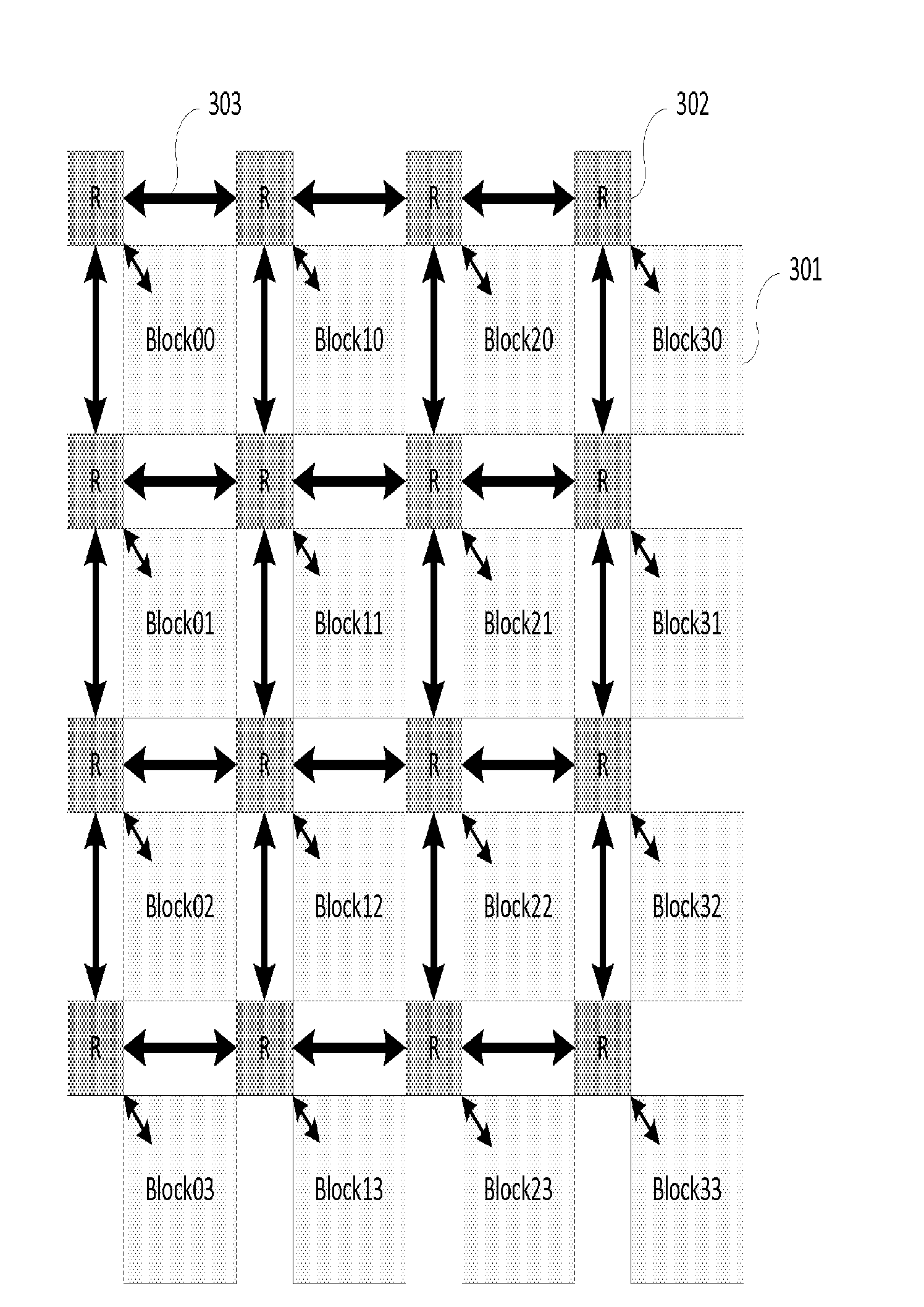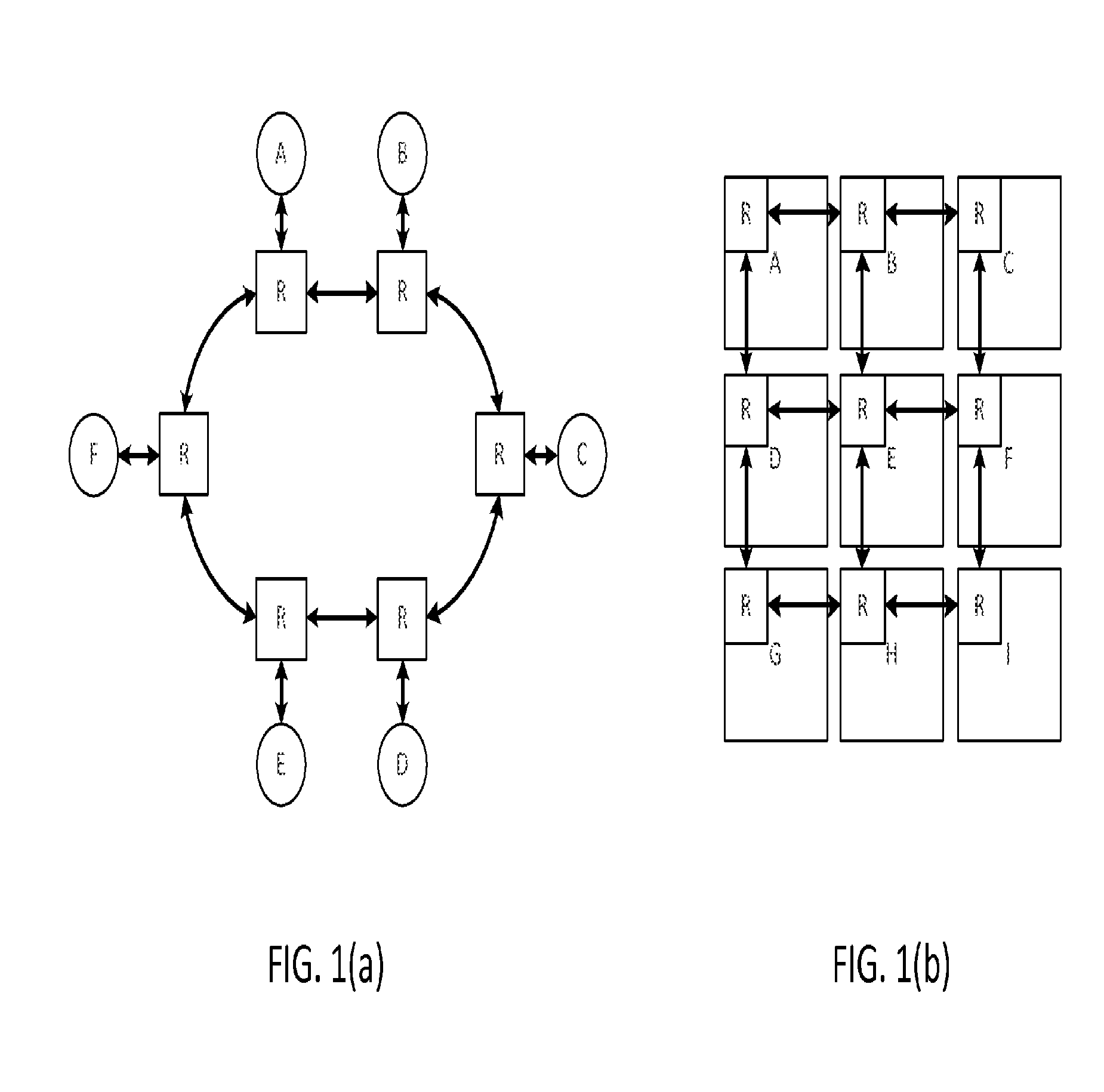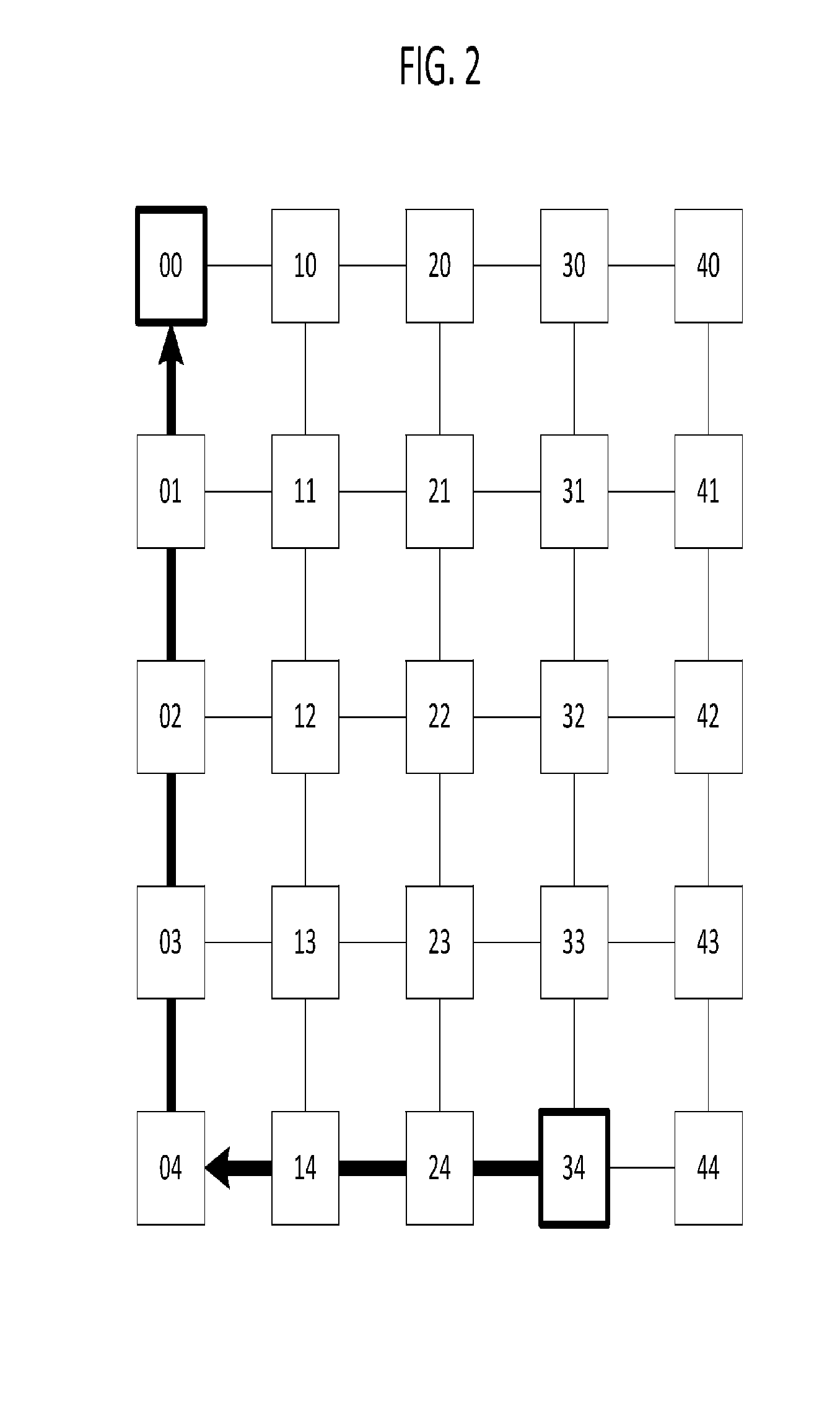ASYMMETRIC MESH NoC TOPOLOGIES
a topology and mesh technology, applied in the direction of cad circuit design, pulse technique, instruments, etc., can solve the problems of complex analysis of routing form, and low efficiency of asymmetric routing
- Summary
- Abstract
- Description
- Claims
- Application Information
AI Technical Summary
Benefits of technology
Problems solved by technology
Method used
Image
Examples
Embodiment Construction
[0032]FIG. 3 illustrates an example of uniform (e.g., homogeneous) cores 301 connected by a full regular mesh topology consisting of routers 302 and physical links 303. Contrast this to FIG. 4 which illustrates blocks of heterogeneous size and shapes interconnected using a customized mesh topology. The customized mesh is adapted from a full mesh by selectively removing one or more routers and / or one or more links from a full mesh, to produce a resultant sparsely populated mesh. This derivative mesh topology with an irregular structure will be referred to herein as a “sparse mesh”.
[0033]An option for interconnecting heterogeneous blocks is to use a network of routers in an ad hoc topology. Such a topology would need each router to be fully identified by a network ID and routing algorithm over the network would have to be fully flexible, requiring complex source routing or distributed table based routing. Compared to this approach, the present inventive concept uses a regular mesh as ...
PUM
 Login to View More
Login to View More Abstract
Description
Claims
Application Information
 Login to View More
Login to View More - R&D
- Intellectual Property
- Life Sciences
- Materials
- Tech Scout
- Unparalleled Data Quality
- Higher Quality Content
- 60% Fewer Hallucinations
Browse by: Latest US Patents, China's latest patents, Technical Efficacy Thesaurus, Application Domain, Technology Topic, Popular Technical Reports.
© 2025 PatSnap. All rights reserved.Legal|Privacy policy|Modern Slavery Act Transparency Statement|Sitemap|About US| Contact US: help@patsnap.com



